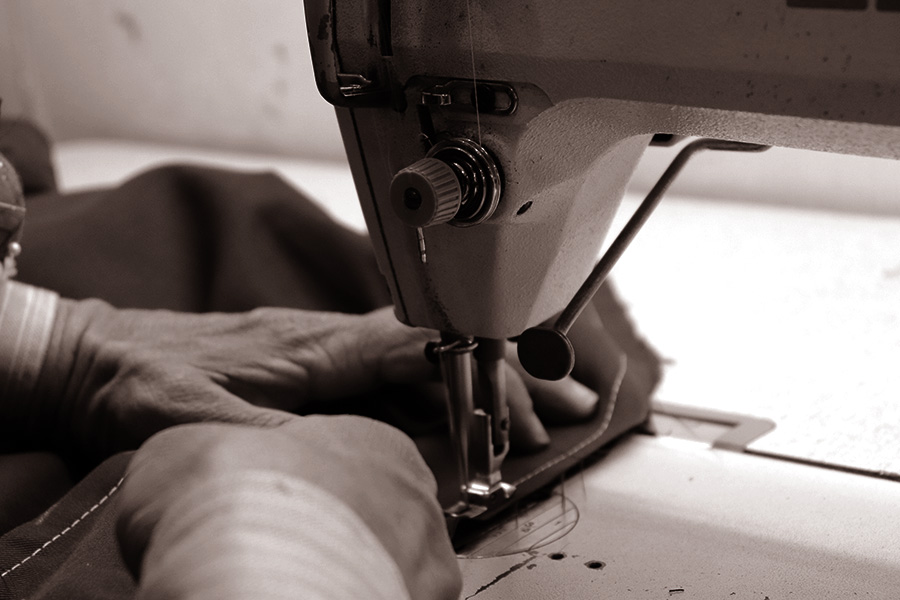Tailor Perth Specialists: Tailor-Made Solutions for Elegant Attire
Tailor Perth Specialists: Tailor-Made Solutions for Elegant Attire
Blog Article
Understanding the Tailoring Process: From Material Option to Last Fitting for the Ideal Wardrobe
The tailoring procedure is a complex interplay of art and science, beginning with the crucial decision of material option and finishing in the accurate modifications of last installations. Each fabric kind brings special high qualities that influence not only the aesthetic allure but additionally the garment's long life and suitability for numerous occasions.
Value of Textile Choice
Choosing the ideal textile is essential in the tailoring procedure, as it straight influences the comfort, longevity, and general aesthetic of the last garment (tailor perth). The option of textile establishes the structure for the garment's style, performance, and capability. Various textiles possess distinct buildings, such as breathability, stretch, and weight, which can significantly influence just how the garment drapes and fits the body
In addition, material selection influences the garment's durability and simplicity of care. Top quality textiles can hold up against deterioration, preserving their look and framework over time, while lower-quality materials may result in pilling or fading. In addition, the best fabric adds to the garment's ability to shift throughout seasons and events, consequently enhancing flexibility.
A customized piece made from an ideal textile not just showcases workmanship however additionally elevates the user's self-confidence. Subsequently, comprehending the subtleties of material choice is critical for any type of tailoring undertaking. It makes sure that the final product not just satisfies the aesthetic needs of the client yet also aligns with practical demands, consequently attaining a harmonious equilibrium between kind and function in the customized wardrobe.
Sorts Of Fabrics and Their Usages
Recognizing the various sorts of fabrics offered is important for making notified choices throughout the tailoring procedure. Each fabric has distinct attributes that dictate its suitability for details garments and occasions.
Cotton, known for its breathability and softness, is ideal for laid-back wear and summer season apparel. Its flexibility permits it to be customized right into everything from shirts to dresses. Wool, on the various other hand, is preferred for its heat and framework, making it an outstanding selection for formal fits and outerwear - tailor perth. Its natural elasticity aids garments keep form gradually.
Silk emanates high-end and is lightweight, making it best for eveningwear and fragile blouses; however, it needs careful handling due to its fragility. Bed linen, with its distinctive coating, is a popular option for warm climates, giving a airy and crisp feeling, but it wrinkles conveniently, which might impact the garment's appearance.
Artificial fabrics, such as polyester and nylon, offer sturdiness and resistance to creases, making them suitable for day-to-day wear and energetic apparel. Comprehending these material types and their homes enables for far better decision-making, making certain that each customized piece not only fits well but additionally straightens with the desired purpose and celebration.
The Tailoring Strategies Described
The art of customizing depends on a selection of techniques that change fabric into well-fitted garments. Central to this procedure is pattern drafting, where a tailor creates themes based upon the customer's measurements and desired design. This initial action makes sure that the garment will fit the user effectively prior to any type of cutting takes place.
As soon as patterns are developed, reducing strategies enter into play. Accuracy is vital as inaccuracies can lead to misfitting garments. Tailors usually make use of numerous cutting techniques, such as single-layer reducing for complex styles and multiple-layer cutting for performance on typical patterns.
Basting is another vital strategy, enabling dressmakers to briefly sew fabric assemble for a preliminary fitting. This approach offers the possibility to assess the drape and general silhouette before final stitching.
Seaming techniques, including flat-felled joints and French seams, improve the garment's durability and aesthetic charm. Tailors also employ techniques such as interfacing and cushioning to supply framework and shape to certain locations, like shoulders and collars.
Last but not least, finishing strategies, including hemming and edge completing, make sure the garment's durability while providing a refined appearance. Together, these strategies create the foundation of effective tailoring, resulting in beautiful, custom-fit apparel.
Fitting Modifications and Factors To Consider

Secret considerations consist of the shoulder fit, which ought to neither sag neither restrict movement, and the sleeve size, which ought to permit comfortable arm motion while keeping a sleek look. Additionally, changes at the waistline can fine-tune the silhouette, with alternatives to allow out or take in textile as needed.
The increase of trousers is an additional critical aspect; it needs to rest conveniently over the hips without creating pain, permitting for ease of motion. why not try this out Hemming sizes for both trousers and skirts ought to show the wearer's preferred design while valuing proportions.

Keeping Your Tailored Clothing
Constantly follow the care label guidelines, which might recommend completely dry cleansing for fragile fabrics or maker washing for even more sturdy products. Avoid frequent laundering, as this can wear down the textile and alter the garment's form.
Storage is similarly essential; use cushioned wall mounts for coats and coats to keep shoulder framework, and store trousers folded up nicely or hung to stop creasing. Safeguard garments from direct sunshine, which can discolor colors and damages fibers.
Furthermore, routine inspections for small repair work can protect against bigger problems. Inspect for loosened switches, fraying seams, or indicators of moth damages, resolving these issues promptly to keep the garment's honesty.
Finally, take into consideration seasonal turning. Wearing tailored items in small amounts allows fabrics to recoup, prolonging their life-span. By applying these upkeep approaches, you can make certain that your customized garments remain as pristine as the day you initially used them, improving your perfect wardrobe for many years ahead.
Conclusion
The tailoring procedure, encompassing textile selection, skilled methods, and exact fitting changes, plays a vital function in creating garments that enhance both convenience and style. Each phase adds to the overall web link effectiveness of the end product, ensuring that garments not just fits well yet additionally shows specific identification. Recognizing the significance of maintenance prolongs the life of customized garments, solidifying their value in a well-curated wardrobe. A detailed technique to customizing finishes in a certain and sleek appearance.
Picking the best fabric is important in the tailoring procedure, as it directly influences the convenience, sturdiness, and total visual of that site the final garment. The choice of material establishes the foundation for the garment's style, functionality, and performance. Various textiles possess special buildings, such as weight, breathability, and stretch, which can substantially influence just how the garment drapes and fits the body.
The art of customizing depends on a selection of methods that transform material into well-fitted garments.The tailoring procedure, including fabric choice, knowledgeable strategies, and exact suitable modifications, plays an important duty in creating garments that boost both convenience and style.
Report this page